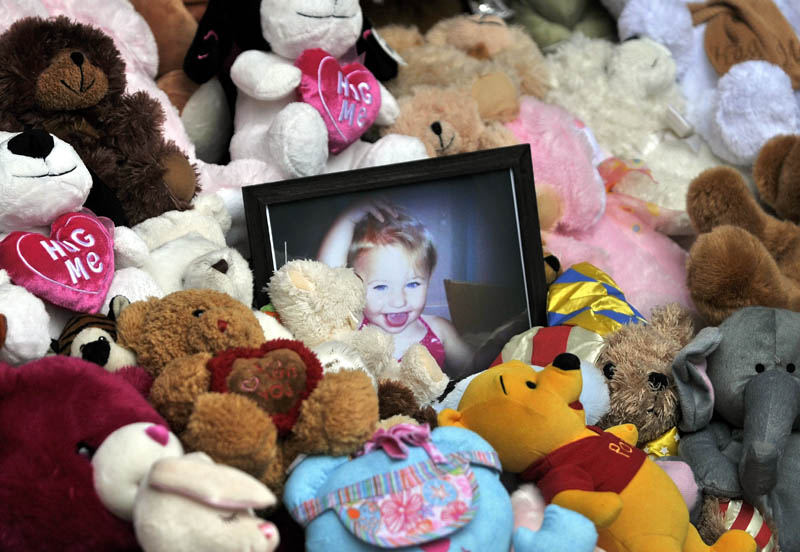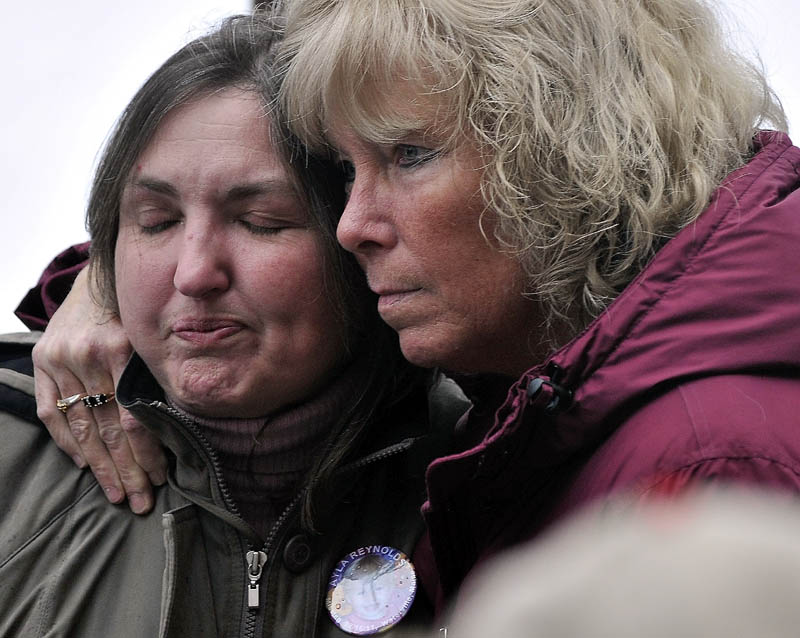It’s been more than a month since police announced a major development in the case of missing toddler Ayla Reynolds, but interest is still thriving on social media.
There are almost 20 different Facebook pages and several blogs dedicated to the Waterville toddler.
Cases like Ayla’s are a natural fit for social media because people can use those tools to organize events, offer support to families and, in some instances, find the missing. Users are also free to express their own theories and stoke rumors, which have the potential to devastate the families of the missing and ignite violence.
High interest
For the past eight years, Tim Caya of Brookings, S.D., has been spreading the word about missing persons through social media. Most recently, his Facebook group Find Ayla Reyolds… has recruited more than 15,000 members from throughout the United States.
Caya’s interest in missing person cases dates back to 2006, when he read about a Nebraska judge who gave a light sentence to a convicted sex offender. Outraged, Caya turned to social media.
Through his MySpace page, Missing, Caya posted information on select cases from all across the United States, attracted 1.7 million followers, according to the site.
Late last year, Caya took the Missing concept to Facebook. In five months, the group has attracted more than 12,000 members.
The Find Ayla group has outpaced his other page by a few thousand members, despite the fact he started it a few months later.
Caya said not all missing person cases spark equal interest among followers, but he’s not surprised by the heavy interest about the one in Waterville.
“In a case like Ayla’s, people want to get involved just because she’s so cute. She’s got blond hair, blue eyes,” he said.
Interest in the case isn’t just restricted to social media, according to Jeff Hanson, Ayla’s step-grandfather.
On Dec. 31, Hanson, a hobbyist web designer, launched aylareynolds.com. Since then, the site has been visited nearly one million times. On Jan. 30, the day after Hanson issued a statement that police had discovered Ayla’s blood in the basement of the home where she was last seen, the site had more than 250,000 hits.
Hanson said there’s a simple reason for the interest in the site.
“You’ve got a baby missing, she’s wearing pajamas that say ‘Daddy’s Princess’ on it and she’s got a cast on her arm — what’s up with that? That just piques peoples’ curiosity to begin with,” he said. “Then, the more people find out about it, the more people get upset about it.”
Explaining the interest
Humans are hard-wired to solve problems and find order in the world, according to Bill Thornton, a professor of social psychology at the University of Southern Maine.
For that reason, missing person cases are inherently interesting. But missing child cases are more compelling, he said.
“We can always say missing adults should have known better, but children are defenseless. They’re innocent,” he said.
Missing children cases tend to interest people with children, because parents can better imagine the heartache involved, he said.
Of missing child cases, stranger abductions create the strongest reactions, because people’s lives feel threatened by randomness, he said. When a child disappears at the hands of a relative, it can be easier to accept because people don’t need to fear for their own children.
If the answer remains unknown, it can create anxiety, he said.
It makes sense that people’s interest in such cases would emerge on social media sites, he said. There, people can offer support to families, maintain hope, indulge morbid curiosity, try to crack the case or express frustration at the pace of the investigation.
Thornton added that television shows like CSI give people unrealistic standards.
“One problem with TV is crimes get solved quickly. You’re at the crime scene and the investigator says he’ll have the DNA analysis for you in the afternoon,” Thornton said. “It doesn’t happen that way. It doesn’t happen that quickly, and it’s frustrating when we see it going on and on and on.”
The good, the bad and the ugly
Social media has proven itself to be a powerful tool in missing person cases.
Caya’s efforts on Facebook and MySpace have brought at least three people home, he said.
As recently as January, Caya’s Facebook posts included information about Kennedy Keels, a teenage runaway from Columbus, Ohio. Caya “friended” Keels’ friends and family through the site, and they shared Caya’s group with other friends.
Caya said one of Keels’ friends knew where she was, but didn’t realize she had run away.
“She went over to talk to her and convinced her to go home,” he said.
The whole process took less than a week, he said.
Keels’ case, however, is a rare exception.
Most of the time, social media is a tool for spreading awareness about missing people and supporting the families involved. Sometimes, however, the comments can be used to spread rumors.
Cynthia Caron is president and founder of LostNMissing, a nonprofit organization that advocates for the families of missing persons. Caron is providing assistance for Ayla’s mother, Trista Reynolds.
Caron said the best use for social media in this case is distributing posters, not gossip.
“I really believe that if someone genuinely wants to help, then the best way to help is to keep posting posters. Get the posters out there,” she said.
If someone feels compelled to make a Facebook site, then they should follow some guidelines, Caron said.
“Make it so there are no comments,” she said. “It should be specifically set up for news, media releases and posters of the person that’s missing or pictures or videos.”
Online comments can be hurtful to families, she said.
“The problem (with social media) is when people come up with their own theories and gossip,” Caron said. “They’re not thinking of the families. That’s extremely hurtful. This is not a TV show for them. It’s not a blog or forum or a computer screen. This is real life. They are literally going to bed every night without knowing where on earth their child is. This is real for them and it does not help when there’s so much going on to have gossip.”
In some cases, users will profess to know the family or investigators, she said.
“Trolls will come in and say terrible things,” she said. “They’ll give ridiculous information that is absolutely not true.”
Trista Reynolds said she has seen both extremes from commenters.
“I do appreciate how much people are keeping her name, her picture and her story going, but it is a little too much at times,” she said.
One aspect is that commenters sometimes express feelings of kinship or ownership of Ayla, she said.
“Some people are saying that she’s their adopted grandchild now, or she’s their adopted daughter, and that’s not flying with me,” she said.
There also is a fair amount of cruelty.
“If you’re not going to be nice, then don’t go onto these websites and say mean, hurtful things. If you’re not being supportive, then keep your mouth shut,” she said.
Nonetheless, some comments are meaningful.
“There are some people who are so nice and so wonderful and always have amazing, thoughtful things to say. They actually keep my spirits held pretty high,” she said.
Facebook mirrors society, said Chris Brogan, president of Human Business Works, a Maine and Massachusetts company that helps devise social media strategies.
“If you think about Facebook as being like a town common, there’s always going to be an opportunity for people to pull out their pitchforks and torches and try to burn the monster,” he said. “But, it’s like anything. No technology is evil. It’s how we use it that can be evil.”
Last month, Waterville police summoned Jeremy Hanson, 19, of Clinton on a charge of vandalizing after he smashed windows at 29 Violette Ave., the home from where Ayla’s father, Justin DiPietro reported her missing.
When police questioned Hanson, he said he was angry over the things he read on Facebook, according to police Chief Joseph Massey.
State Public Safety Spokesman Steve McCausland said social media is not to blame in that incident.
“It’s an aberration that could just as easily have been incited by reading a morning story in the Sentinel,” he said.
Ben McCanna — 861-9239
bmccanna@centralmaine.com
Send questions/comments to the editors.





